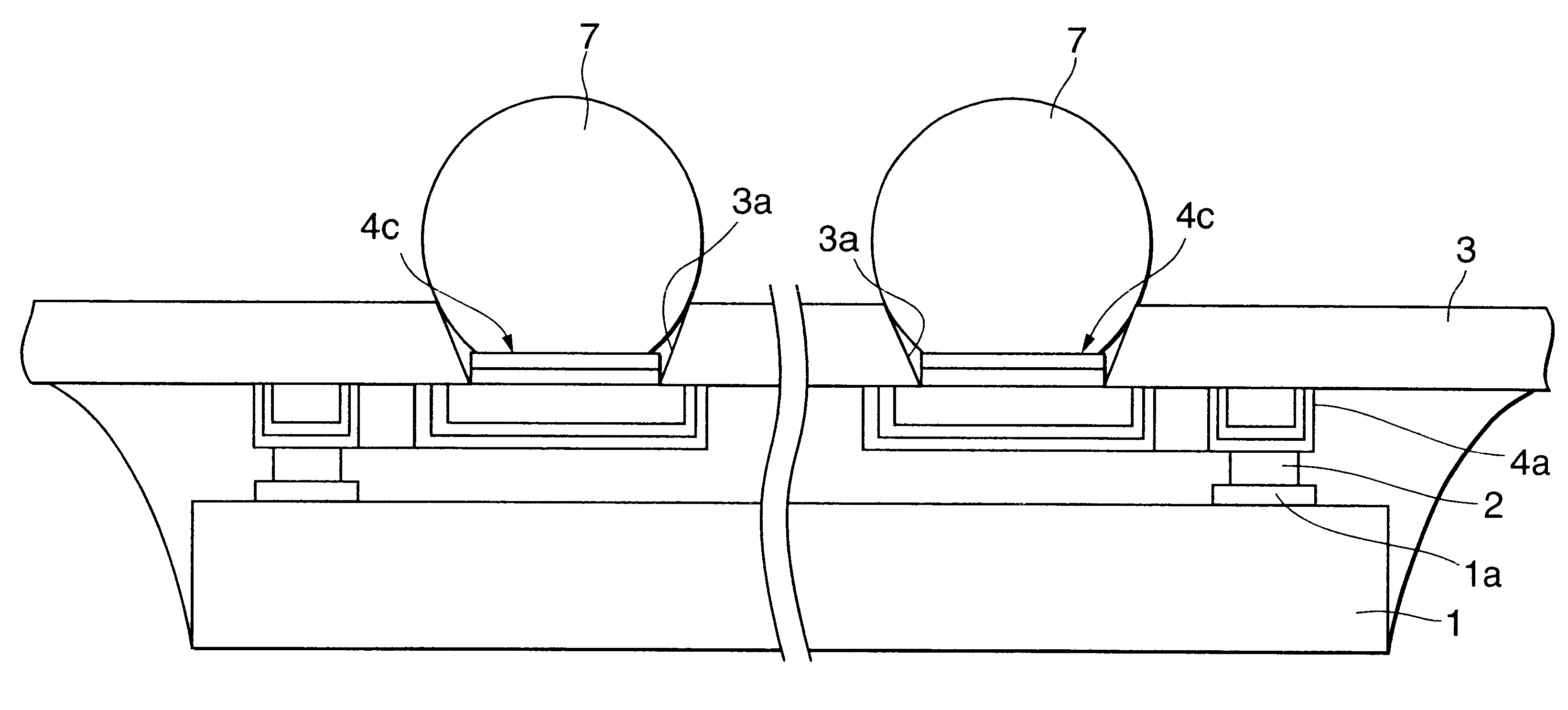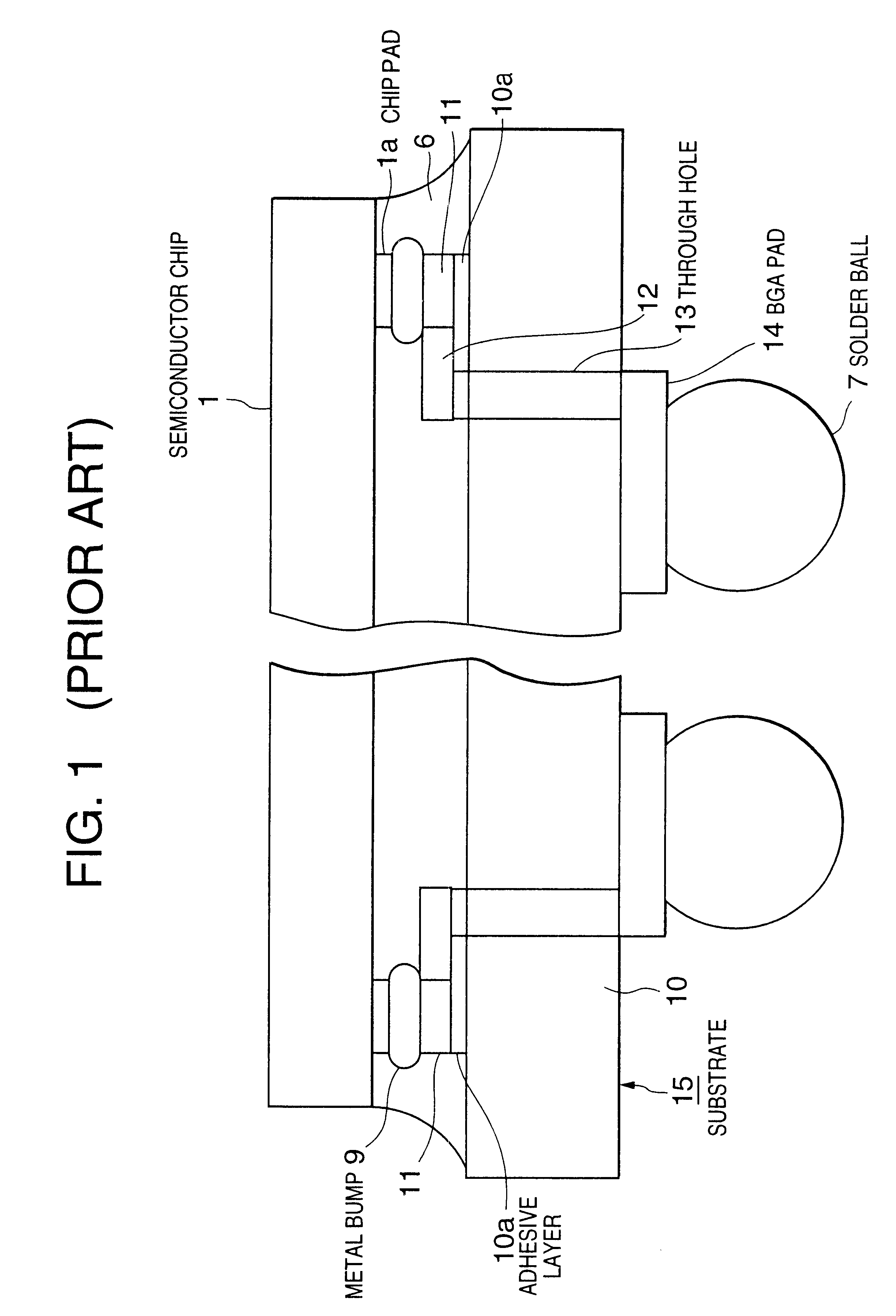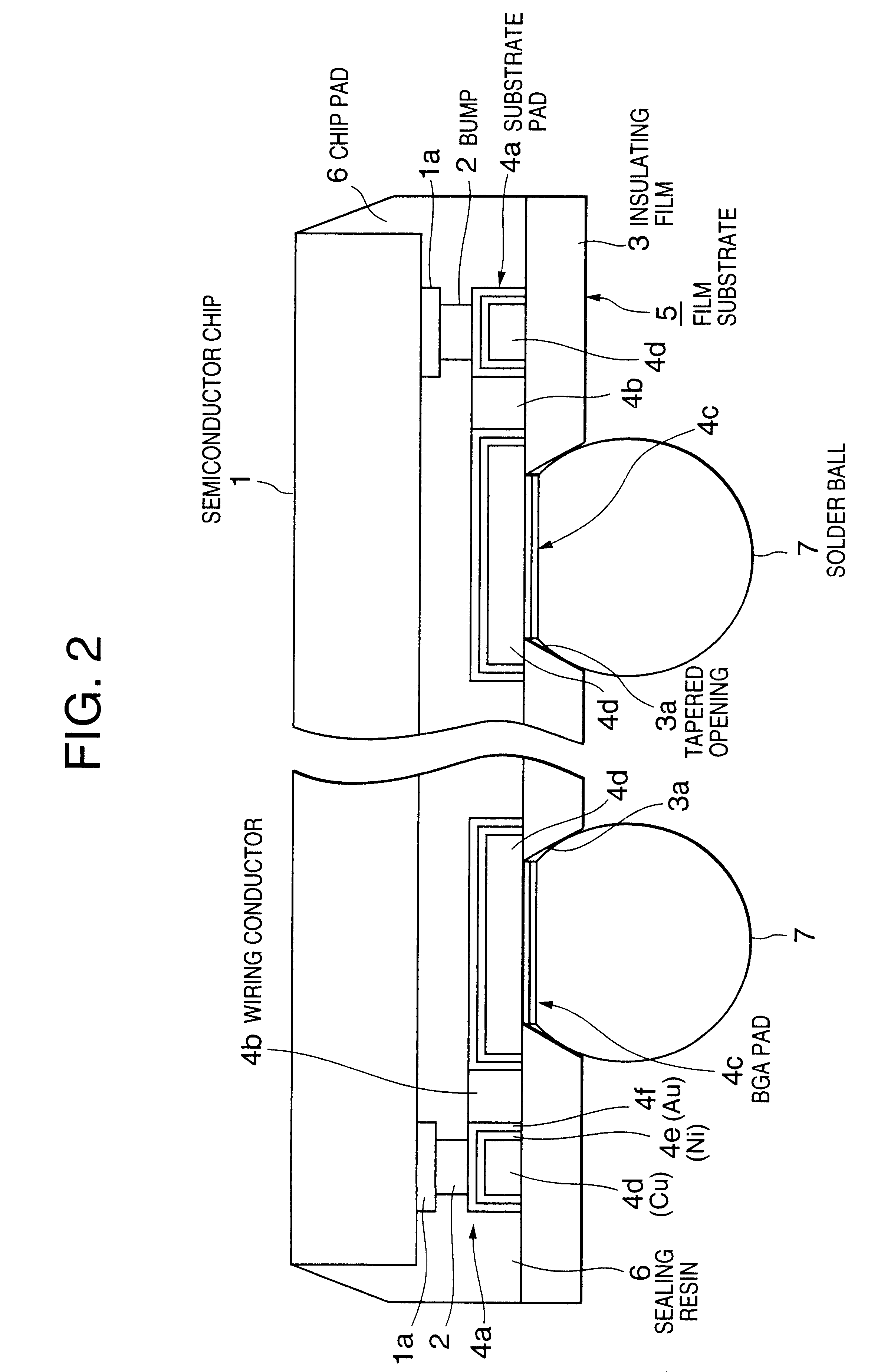Semiconductor device
a technology of semiconductor devices and semiconductor components, applied in semiconductor devices, semiconductor/solid-state device details, electrical devices, etc., can solve the problems of insufficient bonding between the connecting part of the chip and the substrate, damage to the semiconductor device, and bad effect on the reliability of the semiconductor devi
- Summary
- Abstract
- Description
- Claims
- Application Information
AI Technical Summary
Problems solved by technology
Method used
Image
Examples
Embodiment Construction
The practical sizes of respective parts of the semiconductor device of the present embodiment will be illustrated below. The size of the semiconductor chip 1 is 7.times.14.times.0.3 mm. An Au bump 2 having a diameter of 100 .mu.m and a height of 30 .mu.m is formed on a corresponding chip pad 1a of the semiconductor chip 1 by ball bonding.
The size of a chip pad la and a substrate pad 4a is 90 .mu.m square. The chip pad 1a has an area of 59 pins and the minimum pitch thereof is 120 .mu.m.
The polyimide film 3 used in the film substrate 5 is 50 .mu.m thick. The wiring layer is mainly made of copper (Cu) and may be formed directly on one face of the polyimide film 3 by electrolytic plating. There Is no adhesive layer between the polyimide film 3 and the wiring layer. Therefore, the wiring layer is excellent for heat resistance and also high in rigidity in a direction of thickness as a whole.
More specifically, the wiring layer (the substrate pads 4a, the wiring conductors 4b and the BGA p...
PUM
 Login to View More
Login to View More Abstract
Description
Claims
Application Information
 Login to View More
Login to View More - R&D
- Intellectual Property
- Life Sciences
- Materials
- Tech Scout
- Unparalleled Data Quality
- Higher Quality Content
- 60% Fewer Hallucinations
Browse by: Latest US Patents, China's latest patents, Technical Efficacy Thesaurus, Application Domain, Technology Topic, Popular Technical Reports.
© 2025 PatSnap. All rights reserved.Legal|Privacy policy|Modern Slavery Act Transparency Statement|Sitemap|About US| Contact US: help@patsnap.com



